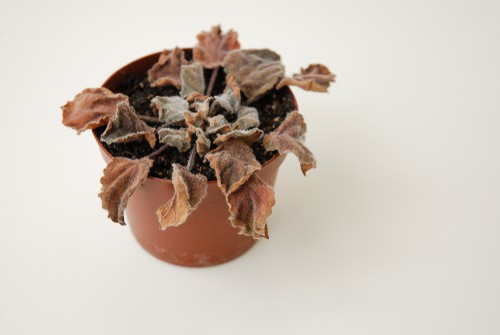African violets are a popular houseplant known for their vibrant and delicate flowers. However, sometimes the flowers can begin to turn brown, which can be frustrating for plant owners. There are several reasons for your African violet flowers turning brown, ranging from improper watering to environmental factors.
Understanding the causes of African violet’s brown condition is essential to prevent the flowers from turning brown. Overwatering or underwatering can lead to the flowers turning brown, as can soil that is too damp or too dry.
Lighting and temperature requirements are also important factors to consider, as African violets require bright but indirect light and temperatures between 65-75 degrees Fahrenheit. In addition, proper nutrition and fertilizer needs must be met, as well as identifying and treating any diseases or pests that may be affecting the plant.
Key Takeaways
- Proper watering and soil conditions are crucial to prevent African violet flowers from turning brown.
- Lighting and temperature requirements must be met to keep African violets healthy and vibrant.
- Identifying and treating diseases and pests is essential for the well-being of African violets.
You might also like these other related posts:
- African Milk Tree Turning Brown:
- Why Does My Pothos Have Brown Spots?
- Pitcher Plant Pitchers Turning Brown
Understanding African Violet’s Brown Condition
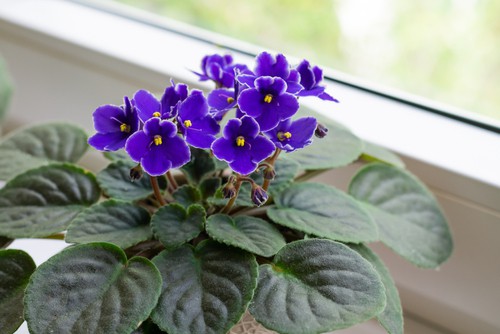
African violets are popular houseplants known for their beautiful and delicate flowers. However, sometimes their flowers may turn brown, indicating that the plant is not in good health. Brown flowers can be a sign of several issues, including overwatering, underwatering, nutrient deficiency, pests, and diseases.
When African violet plants are overwatered, the roots may become waterlogged, leading to root rot. Root rot can cause the leaves and flowers to turn brown and wilt. On the other hand, underwatering can cause the leaves to dry out and turn brown, which can spread to the flowers.
It is essential to water African violets properly by allowing the soil to dry out between watering sessions.
Nutrient deficiency can also cause African violet flowers to turn brown. These plants require specific nutrients, including nitrogen, phosphorus, and potassium, to grow and thrive. Lack of these nutrients can cause the flowers to turn brown and the leaves to become yellow.
It is essential to fertilize African violets regularly to ensure they have all the necessary nutrients.
Pests, such as spider mites and thrips, can also cause African violet flowers to turn brown. These pests feed on the plant’s sap, causing the flowers and leaves to dry out and turn brown. It is essential to inspect African violets regularly for signs of pests and take appropriate measures to control them.
Finally, diseases, such as crown rot and leaf spot, can cause African violet flowers to turn brown. Crown rot is caused by overwatering, and it can cause the crown of the plant to rot, leading to brown flowers and leaves. Leaf spot is caused by fungi and can cause brown spots on the leaves, which can spread to the flowers.
1. Watering and Soil Conditions
African violets are sensitive plants, and their soil and watering conditions are crucial for their health. Overwatering is one of the most common causes of African violet flowers turning brown. When the soil is too wet, the roots can’t absorb the water, leading to root rot and brown leaves and flowers.
To avoid overwatering, it’s important to wait until the soil is dry before watering again. You can check the soil’s moisture level by sticking your finger about an inch deep into the soil. If it feels dry, it’s time to water. If it’s still moist, wait a few more days before checking again.
It’s also important to avoid getting any water on the crown of your violet. Allowing too much water to build-up on the leaves may also lead to disease and brown spots forming. Watering from the bottom can help prevent this issue.
The type of potting mix you use can also affect your African violet’s soil moisture level. African violets prefer a fast-draining soil, so it’s important to use a potting mix that is specifically designed for these plants. If the soil is too dense, it can retain too much moisture, leading to brown leaves and flowers.
Poor drainage can also cause soil to become too wet, so make sure your pot has drainage holes. If you’re using a self-watering pot, be sure to monitor the water level to avoid overwatering.
2. Light and Temperature Requirements
African violets require a specific balance of light and temperature to thrive. Too much or too little of either can cause the plant’s flowers to turn brown. Here are some key things to keep in mind when it comes to light and temperature:
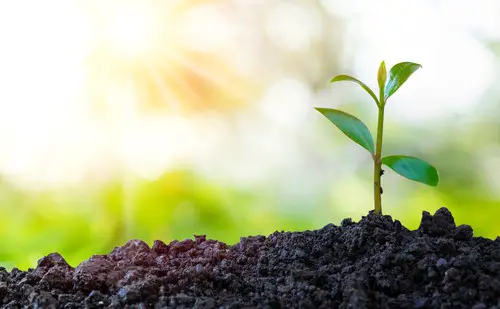
Light Conditions
African violets prefer bright, indirect light. Direct sunlight can scorch the leaves and cause brown spots to appear. On the other hand, too little light can cause the plant to become leggy and produce fewer flowers.
In their natural habitat, African violets grow under the canopy of trees, which filters out some of the sun’s rays. Mimicking this environment in your home can help your plant thrive. Placing your African violet near a north-facing window or providing it with filtered light can help it get the light it needs without being exposed to direct sunlight.
Grow Lights
If you don’t have a suitable window for your African violet, you can use a grow light to provide it with the light it needs. Grow lights are designed to mimic the spectrum of natural sunlight and can be adjusted to provide the right amount of light for your plant.
Temperature
African violets prefer temperatures between 65-75°F (18-24°C). Temperatures outside this range can cause the plant to produce fewer flowers or even stop blooming altogether.
Low temperatures can also cause the leaves to turn brown and become brittle. If your African violet is near an air vent or in a drafty area, it may be exposed to cooler temperatures than it can handle. Moving it to a warmer location can help it recover.
In summary, providing your African violet with the right balance of light and temperature is crucial for keeping its flowers from turning brown. Bright, indirect light and temperatures between 65-75°F (18-24°C) are ideal. If you need to supplement your plant’s light with a grow light, make sure to choose one that mimics the spectrum of natural sunlight.
3. Nutrition and Fertilizer Needs
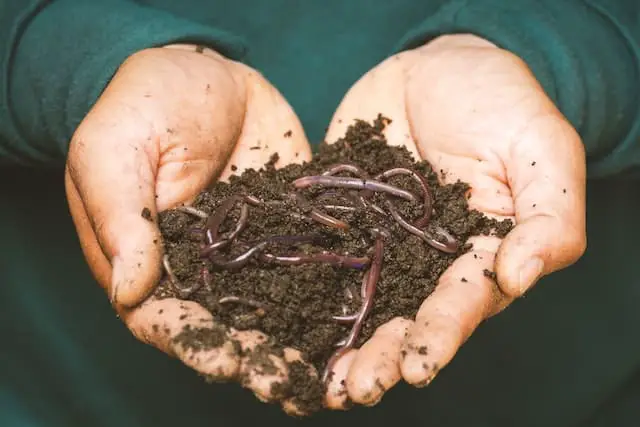
African violets require specific nutrients to thrive, and proper fertilization is essential to ensure healthy growth and vibrant blooms. The recommended fertilizer ratio for African violets is 14-12-14, which provides the necessary balance of nitrogen, phosphorus, and potassium, along with trace minerals.
Over-fertilization, however, can lead to a buildup of fertilizer salts in the soil, which can damage the plant’s roots and cause brown spots on the leaves and flowers. It is crucial to avoid using too much fertilizer and to follow the manufacturer’s instructions carefully.
Potassium is an essential nutrient for African violets, as it strengthens the plant’s cell walls, making it less susceptible to disease and promoting better root growth. A lack of potassium can cause yellow and brown leaves. Therefore, it is essential to use a fertilizer that contains an adequate amount of potassium.
Water-soluble fertilizers are an excellent choice for African violets, as they are easily absorbed by the plant and provide a consistent supply of nutrients. Urea-free fertilizers are also a good option, as they are less likely to burn the plant’s roots and leaves.
Identifying and Treating Diseases
African violets are susceptible to various diseases that can cause their flowers to turn brown. Identifying and treating these diseases promptly is crucial to prevent further damage to the plant.
Common Diseases
1. Botrytis Blight
Botrytis blight, caused by the fungus Botrytis cinerea, is a common disease that affects African violets. It appears as small water-soaked lesions on the underside of the leaf, and leaves, stems, or flowers become blighted and turn dark brown to gray, often with a fuzzy coating on the surface.
Prevention and treatment include collecting and discarding all dead and dying plant material and using a fungicide.
2. Crown Rot
Crown rot is a severe disease that can cause the loss of entire groups of African violet plants. It is caused by fungi such as Pythium spp., Phytophthora spp., and Fusarium spp.
Symptoms include older leaves drooping and younger leaves showing stunting, while roots are killed rapidly and appear brown. Treatment involves administering a fungicide before massive root death.
3. Mildew and Rust
Powdery mildew and rust are fungal diseases that can cause African violet flowers to turn brown. Powdery mildew appears as a white powdery substance on the leaves, while rust appears as small orange to reddish-brown spots on the underside of the leaves. Treatment involves removing infected plant parts and using a fungicide.
4. Stem Rot
Stem rot is a fungal disease that causes the stem of the African violet to turn brown and become mushy. It is caused by overwatering or poor drainage, which leads to root rot. Prevention includes avoiding overwatering and improving drainage, while treatment involves removing infected plant parts and using a fungicide.
Treatment
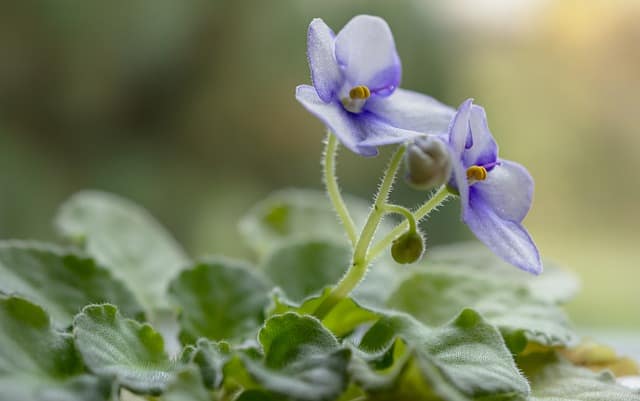
Treating African violet diseases involves identifying the disease and the cause, removing any infected plant parts, and using appropriate treatments such as fungicides. It is important to follow the instructions on the fungicide label and to avoid overuse, as this can lead to further damage to the plant.
Prevention is also essential, and it involves providing the plant with proper care, such as avoiding overwatering, improving drainage, and providing adequate light and humidity. Regularly inspecting the plant for any signs of disease and promptly treating any issues can help keep the plant healthy and prevent further damage.
Dealing with Pests
African violets are susceptible to a variety of pests, including insects and mites. Some common pests that can cause brown spots on African violet flowers include cyclamen mites, mealybugs, citrus mealybug, and comstock mealybug.
To deal with pests on African violets, the first step is to isolate the affected plant to prevent the infestation from spreading to other plants. Then, inspect the plant carefully to identify the type of pest that is causing the problem.
One effective way to get rid of pests on African violets is to use rubbing alcohol. Dip a cotton swab in rubbing alcohol and gently wipe the leaves and flowers of the plant. This will kill the pests on contact and prevent them from coming back.
Insecticides can also be used to control pests on African violets. Imidacloprid is a common insecticide that is effective against mealybugs and other pests. However, it is important to follow the instructions carefully and not to overuse the product, as this can harm the plant.
Another option is to use neem oil, which is a natural insecticide that is safe for use on African violets. Simply mix a small amount of neem oil with water and spray the plant’s leaves and flowers. This will help to repel pests and prevent future infestations.
Overall, dealing with pests on African violets requires careful attention and a proactive approach. By taking steps to prevent infestations and using effective pest control methods, it is possible to keep these beautiful plants healthy and thriving.
Environmental Factors and Adjustments
African violets are sensitive plants that require specific environmental conditions to thrive. When the plant’s flowers start turning brown, it is often an indication that something is wrong with the plant’s environment. Here are some environmental factors that can cause African violet flowers to turn brown and what adjustments can be made to fix the issue.
1. Dry Air
African violets require high levels of humidity to grow properly. When the air is too dry, the flowers and leaves can start to wilt and turn brown. To combat this issue, it is recommended to place the plant in a humidity tray or mist the leaves regularly. Additionally, keeping a small fan nearby can help to circulate the air and prevent dryness.
2. Direct Sun Exposure

While African violets require bright, indirect light to grow, direct sun exposure can cause the flowers to turn brown. If the plant is placed in a window where it receives direct sunlight, it is recommended to move it to a location with filtered light.
3. Environmental Conditions
Unfavorable environmental conditions such as low temperatures, poor soil aeration, wet soil, or excessively dry air can contribute to flower failure. Maintaining a consistent temperature between 65-75°F and using a well-draining soil mix can help prevent these issues.
4. Air Circulation
African violets require good air circulation to prevent the growth of fungi, which can also turn leaves brown. If the plant is in a stagnant area, it is recommended to move it to an area with better air circulation. Keeping the doors and windows in the house open can also help to improve air circulation.
5. Roots
Overwatering or underwatering the plant can cause root damage, which can lead to brown flowers. It is recommended to water the plant when the top inch of soil is dry and to avoid getting water on the leaves. Additionally, repotting the plant every 6-12 months can help to ensure healthy root growth.
Proper Care for New and Old Growth
To keep African violets healthy and vibrant, it’s essential to provide them with proper care. This includes paying attention to both new growth and the oldest leaves on the plant.
New growth should be encouraged by providing adequate light and water. African violets prefer bright, indirect light, so placing them near a sunny window with a sheer curtain is ideal.
Watering should be done when the top inch of soil feels dry to the touch. Overwatering can lead to drooping leaves, limp foliage, and flower loss, while underwatering can cause wilting and drooping leaves.
As for the oldest leaves, it’s natural for them to turn brown and eventually detach from the plant. This is a sign of natural aging and should not be a cause for concern. However, if the leaves are turning brown prematurely, it could be a sign of a problem with watering or light.
To ensure that African violets continue to produce blooms, it’s important to fertilize them regularly. Use a balanced fertilizer, such as a 10-10-10 formula, and apply it every two weeks during the growing season. Be sure to follow the instructions on the package carefully to avoid over-fertilizing, which can damage the plant.
Repotting and Soil Issues
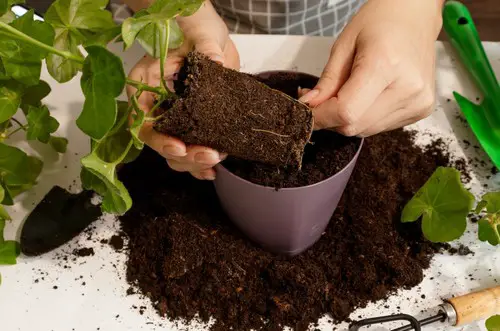
African violets need to be repotted every 6-12 months to ensure they have enough room to grow and access to fresh soil. Signs that an African violet needs to be repotted include a root-bound plant, slow growth, and lack of blooms. Repotting an African violet while it is in bloom is possible, but it can shock the plant and cause it to drop its flowers.
When repotting an African violet, it is important to use a well-draining potting mix that is specifically formulated for African violets. A mix that is too dense can cause the soil to retain too much moisture, which can lead to root rot. On the other hand, a mix that is too light can dry out too quickly and cause the plant to wilt.
Another common soil issue with African violets is salt buildup. This can happen when tap water is used to water the plant, as the minerals in the water can accumulate in the soil over time. Signs of salt buildup include brown tips on the leaves and a white crust on the soil surface.
To prevent salt buildup, it is recommended to use distilled or rainwater to water African violets. If tap water must be used, it is important to flush the soil periodically to remove any excess salt. This can be done by watering the plant thoroughly until water runs out of the drainage holes in the bottom of the pot.
Engaging with African Violet Communities
African Violets are a popular indoor plant and have a dedicated following of enthusiasts. Engaging with African Violet communities can be a great way to learn more about these plants, get advice on how to care for them, and connect with other plant lovers.
1. Facebook Groups
There are many Facebook groups dedicated to African Violet enthusiasts. These groups are a great place to ask questions, share photos of your plants, and connect with other plant lovers. Some popular groups include “African Violet Lovers”, “African Violet Addicts”, and “African Violet Society of America”.
2. African Violet Clubs
Joining an African Violet club is another great way to connect with other enthusiasts. These clubs often hold meetings, plant sales, and shows. They can also provide valuable advice on how to care for your plants. To find a club in your area, check with your local gardening center or search online for “African Violet club near me”.
3. Houseplant Lovers
African Violets are just one of many plants that can be grown indoors. Joining a houseplant lovers group or forum can be a great way to learn more about indoor gardening in general. These groups can provide advice on lighting, soil, and fertilization, as well as tips on how to deal with common pests and diseases.
4. Plant Care
African Violets require specific care to thrive. Joining a plant care group or forum can be a great way to get advice on how to care for your plants. These groups can provide information on watering, fertilization, and pest control. They can also provide tips on how to propagate your plants and how to deal with common issues like yellow leaves and brown spots.
Choosing the Right African Violet
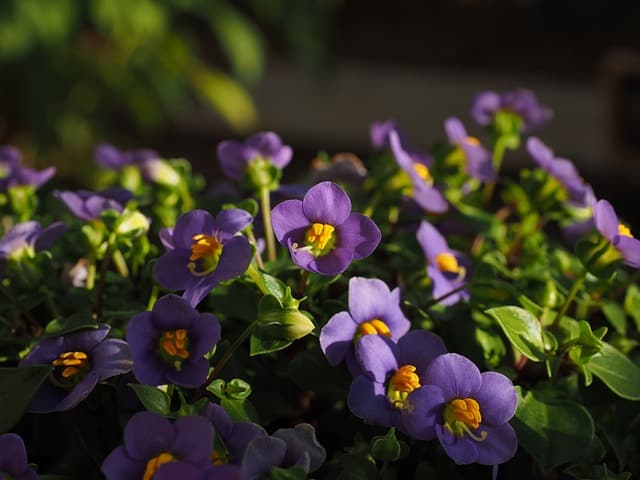
African violets are a popular choice for indoor plants due to their fuzzy leaves and decorative flowers. They are a hardy plant that can survive in most conditions, making them a great choice for beginners. However, choosing the right African violet is important to ensure healthy growth and prevent issues such as brown flowers.
1. Consider the Type of African Violet
There are many different types of African violets, each with their own unique features. Some are wild and have small, delicate flowers, while others have large, showy blooms. When choosing an African violet, consider the size of the plant, the color and shape of the flowers, and the texture of the leaves.
2. Choose a Healthy Plant
When selecting an African violet, look for a plant with healthy leaves and stems. Avoid plants with yellow or brown leaves, as this is a sign of disease or poor health. Check the soil to ensure it is moist but not waterlogged, and look for signs of pests such as spider mites or aphids.
3. Select the Right Pot
Choosing the right pot for your African violet is important for healthy growth. Select a pot that is the right size for your plant, with enough room for the roots to grow. A decorative pot can add to the aesthetic appeal of your plant, but make sure it has proper drainage to prevent overwatering.
4. Follow a Beginner-Friendly Guide
If you are new to growing African violets, consider following a beginner-friendly guide to ensure proper care. This can include information on watering, fertilizing, and pruning your plant, as well as troubleshooting common issues such as brown flowers.
5. Consult a Nurse or Expert
If you are unsure about how to care for your African violet, consider consulting a nurse or expert. They can provide valuable advice on how to keep your plant healthy and prevent issues such as brown flowers.
Frequently Asked Questions
What causes African violet flowers to turn brown?
African violet flowers may turn brown due to overwatering, underwatering, or poor air circulation. If the soil is too wet or too dry, the flowers may start to turn brown. Additionally, if the plant is in an area with poor air circulation, fungi may grow and cause the flowers to turn brown.
How can I prevent my African violet flowers from turning brown?
To prevent African violet flowers from turning brown, make sure to water the plant only when the soil is dry to the touch. Also, ensure that the plant is in an area with good air circulation. Avoid placing the plant in direct sunlight, as this can also cause the flowers to turn brown.
What is the best way to deadhead African violets?
To deadhead African violets, simply remove the spent flowers by pinching them off with your fingers or using scissors. Be sure to remove the entire flower stem, including the base of the stem where it meets the plant. Deadheading will encourage the plant to produce new flowers.
What are the signs of overwatering an African violet?
Signs of overwatering in African violets include yellowing leaves, wilting, and root rot. The soil may also have a foul odor. To prevent overwatering, make sure to water the plant only when the soil is dry to the touch.
How do I save an African violet from root rot?
To save an African violet from root rot, remove the plant from the soil and cut away any rotted roots. Repot the plant in fresh soil and make sure to water only when the soil is dry to the touch. Avoid overwatering and ensure that the plant is in an area with good air circulation.
Why do African violet leaves turn brown on the edges?
African violet leaves may turn brown on the edges due to underwatering, overwatering, or exposure to direct sunlight. If the leaves are turning brown on the edges, check the soil moisture and adjust watering accordingly. Also, make sure the plant is not in direct sunlight.

Hey, I’m Lisa and I’ve been an avid gardener for over 30 years. I love writing, talking and living in the garden! Feel free to connect with me on my socials below

